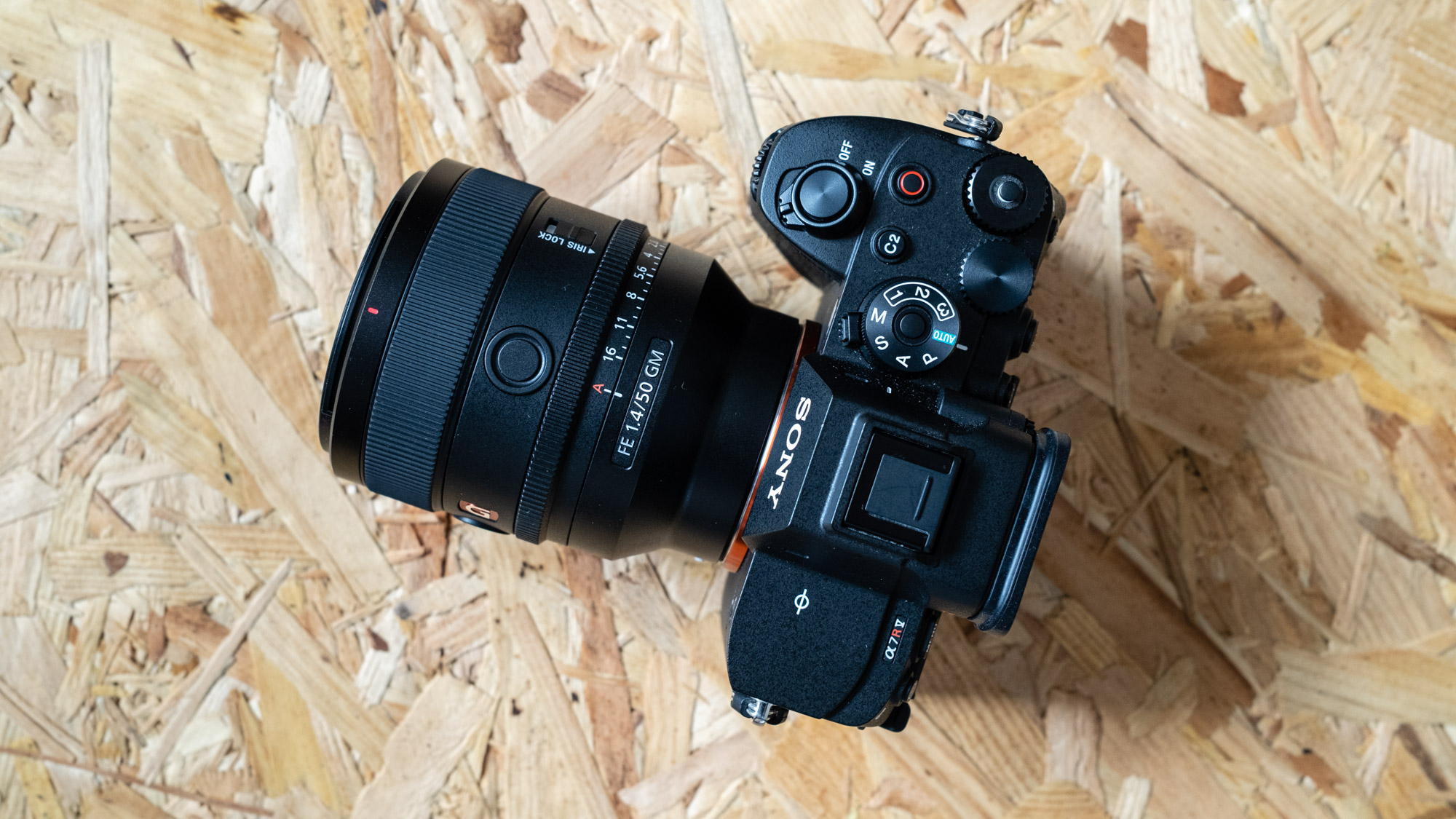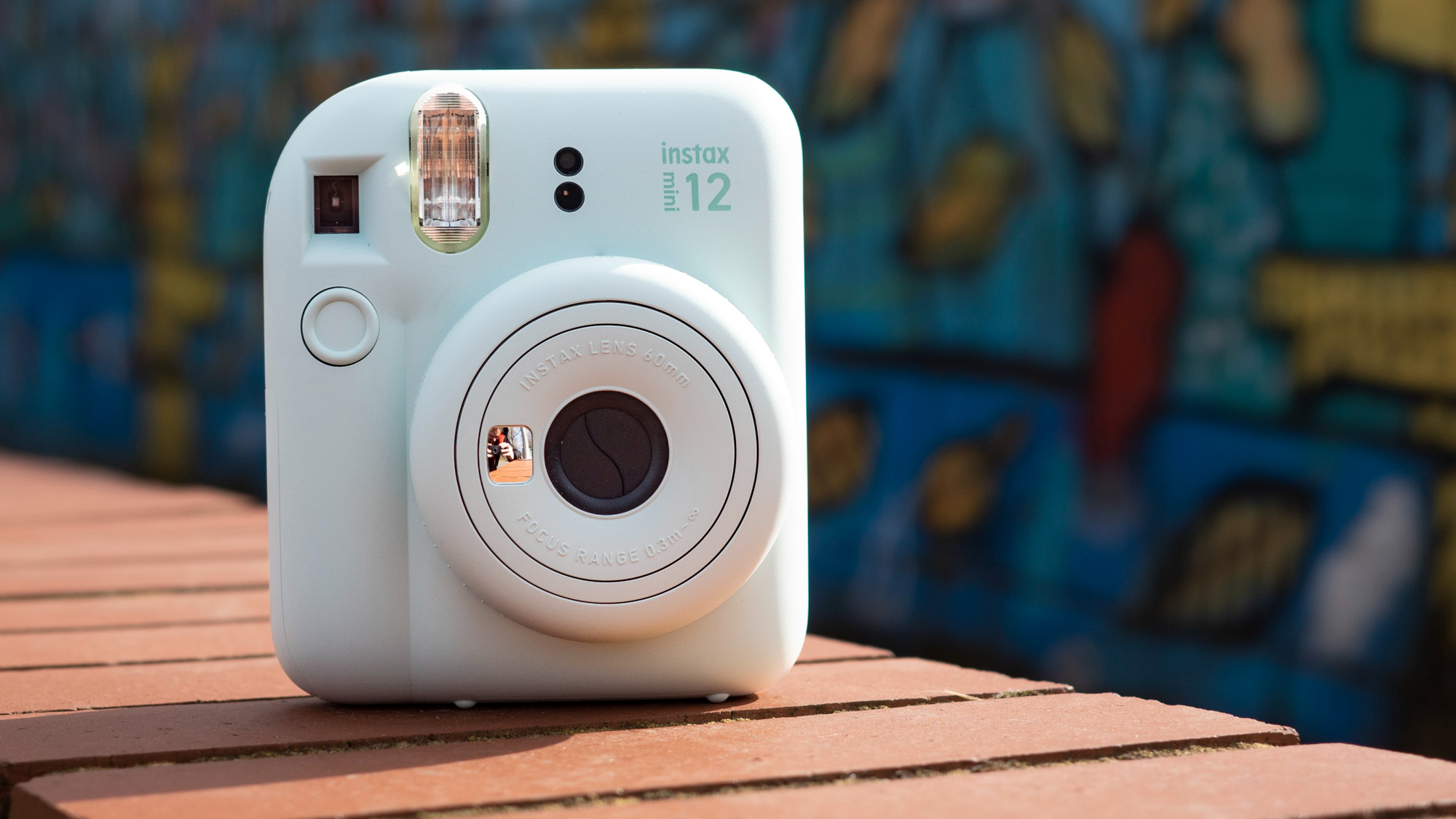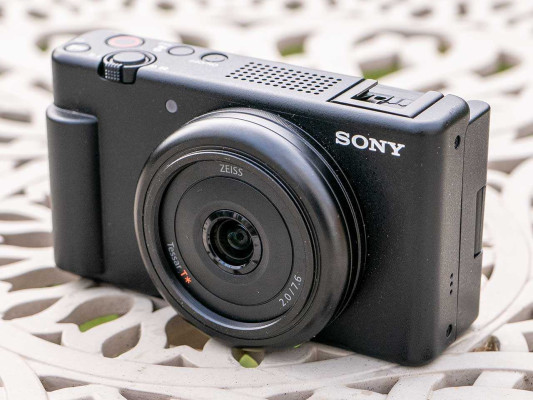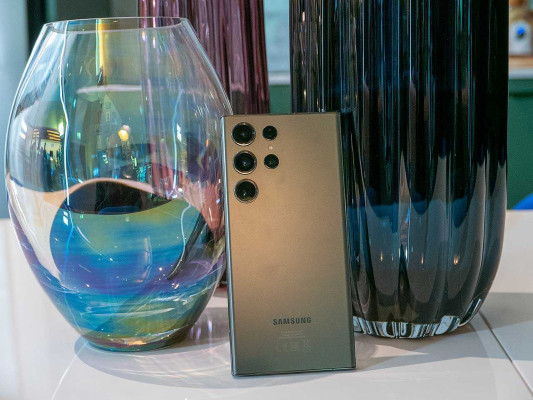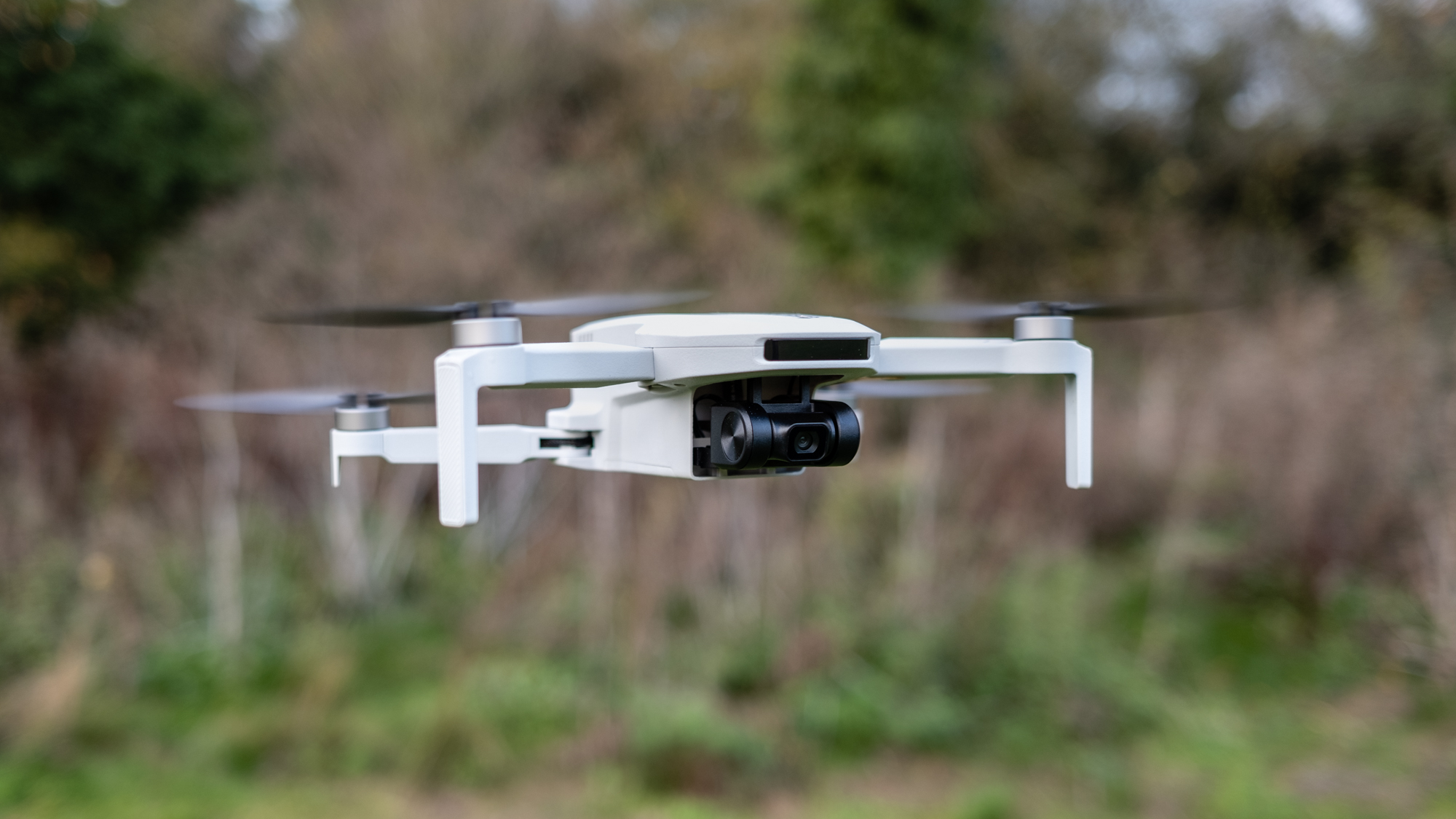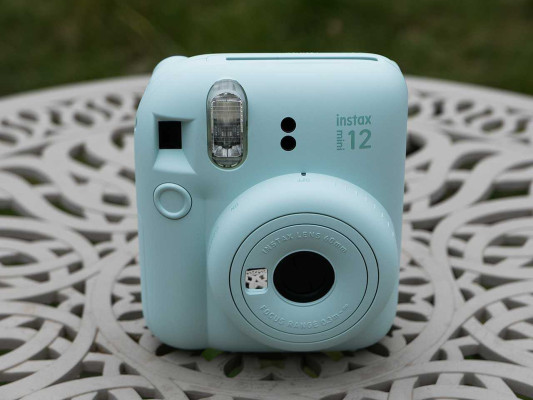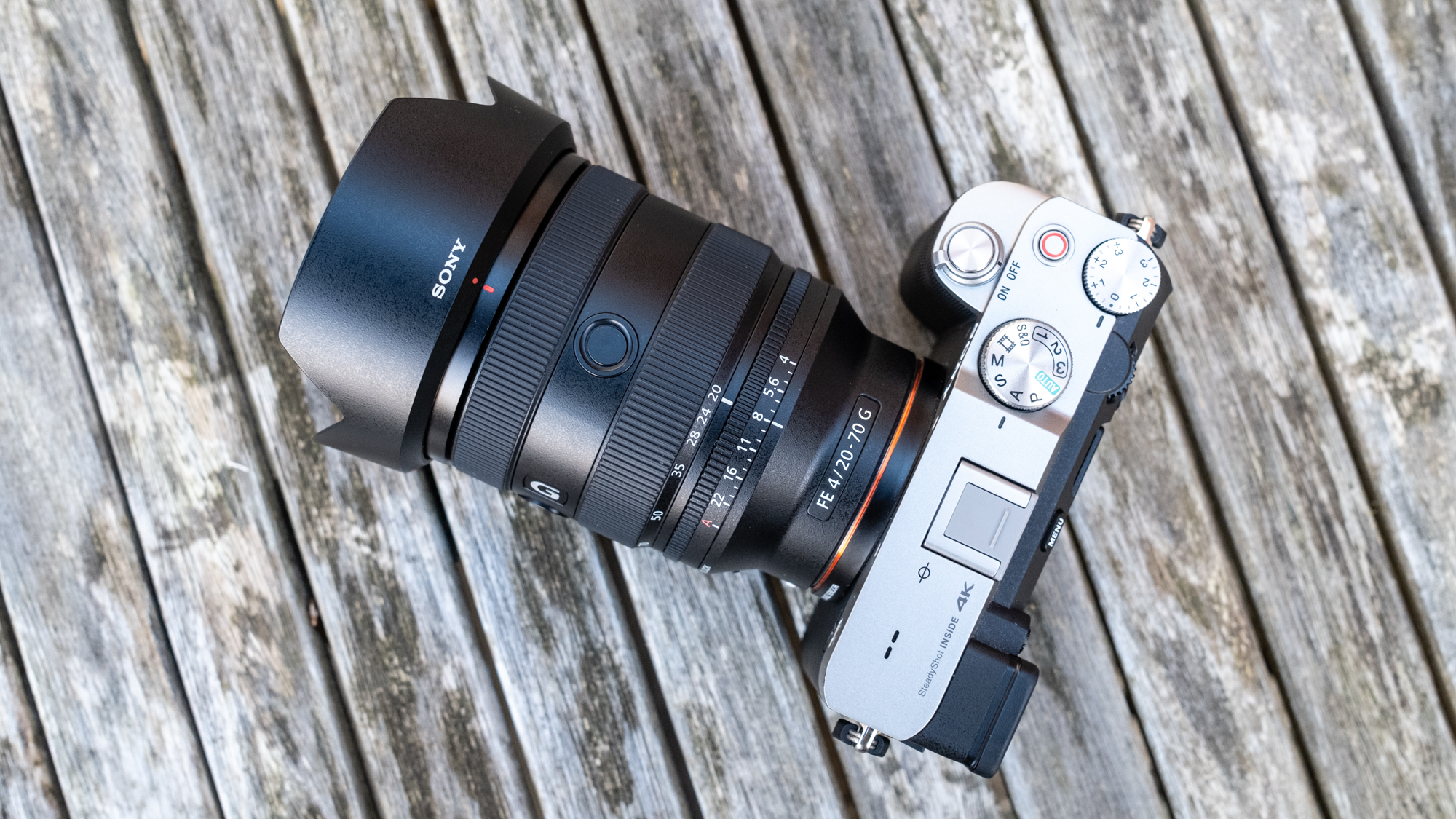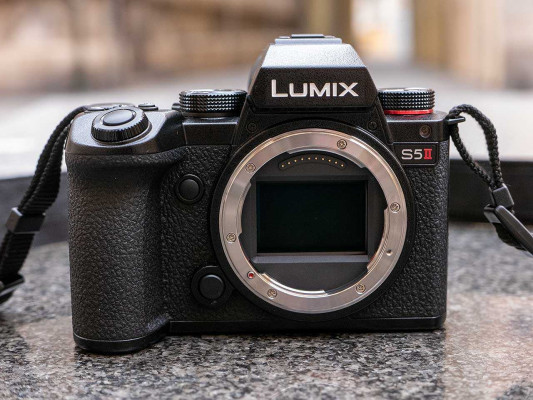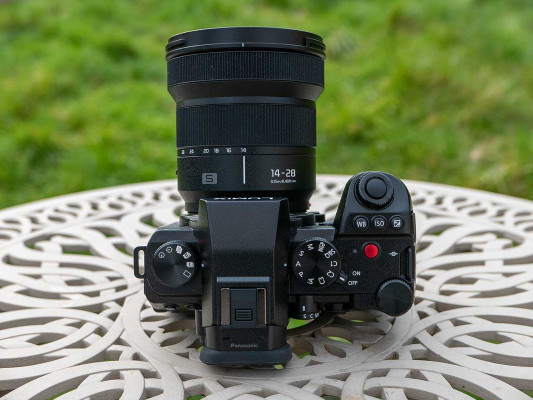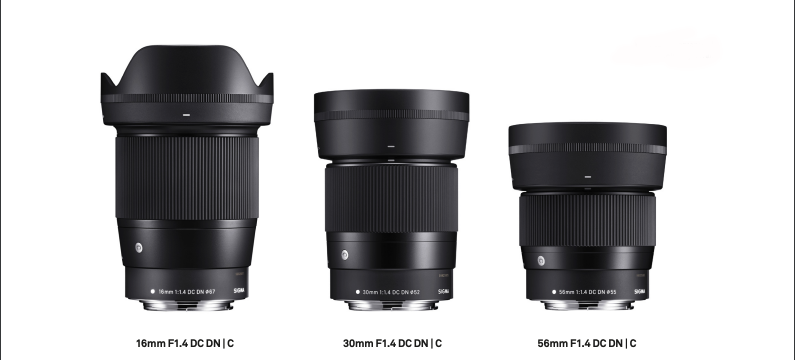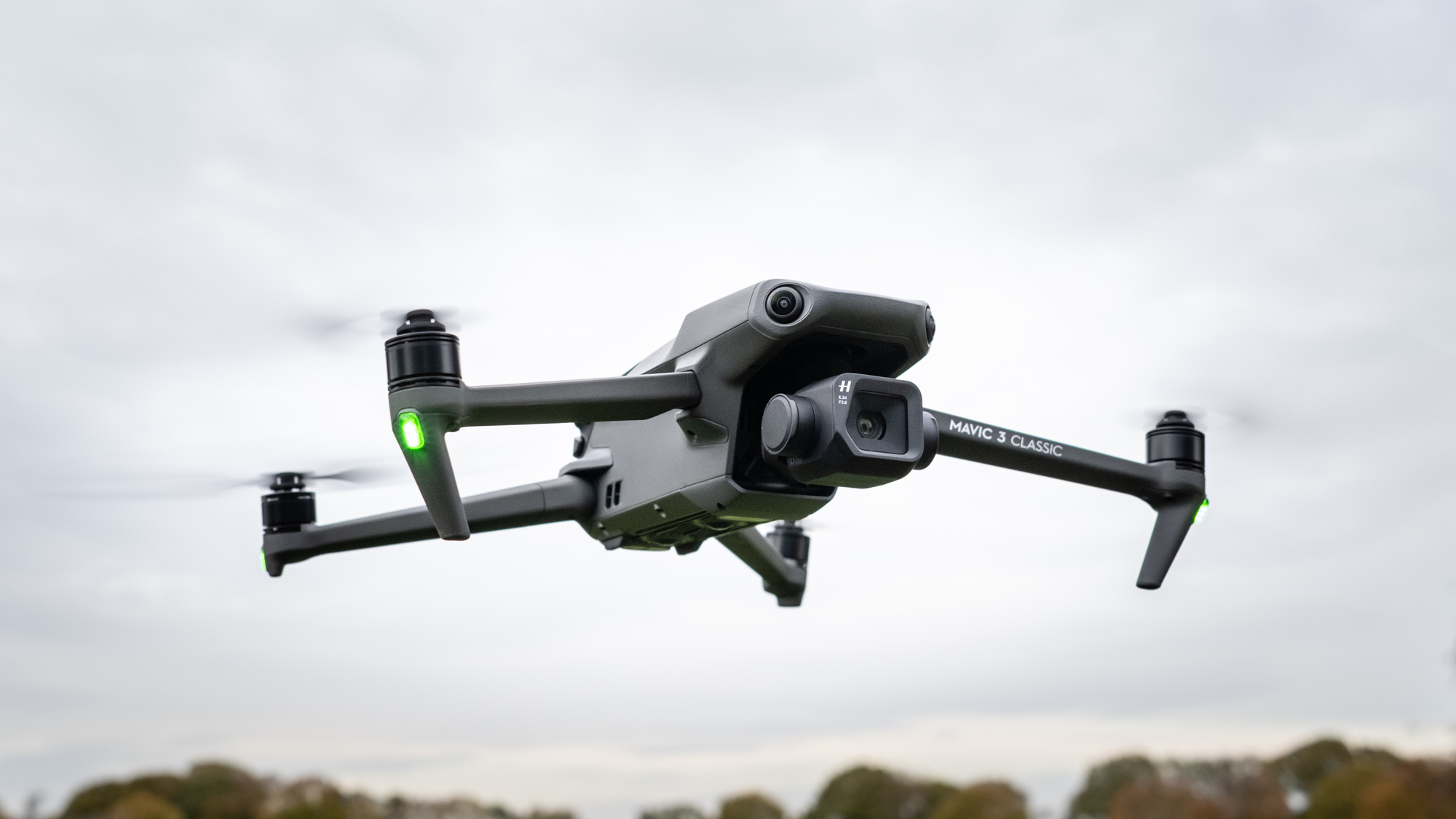Reviews

Sony ZV-E1 preview
DPReview Latest |
Product photos: Richard Butler
The Sony ZV-E1 is the latest of the company's vlogging-focused cameras, but one that extends the concept to the high-end full-frame realm. It's a camera with the sophisticated selfie mics and face-the-camera approach of the existing ZV models but one that shares many of its internals with the a7S III and FX3.
Key specifications
- 12MP full-frame CMOS sensor with no mechanical shutter
- UHD 4K video at up to 60p without crop
- Full HD (1080) footage at up to 120p
- 10-bit 4:2:2 capture (All-I or LongGOP)
- 4K/120p and 1080/240 will be added later (a paid upgrade in some regions)
- 5-axis image stabilization
- UVC 4K/30p video stream when plugged in as USB device
- Unlimited 4K/30p, 30 minutes 4K/60p (at 25°C)
- Single UHS-II SD slot
- Micro HDMI slot
- 483g including battery
The ZV-E1 will come in black or white and will be available from early April, with pre-sales beginning on March 30th. It will cost around $2200 body only, and around $2500 with the 28-60mm F4-5.6 zoom.
Jump to:
What's new | How it compares | Body and handling | Initial impressions | Sample gallery | Specifications | Press release
What's new
The ZV-E1 includes the same 12MP sensor (probably actually 48MP with quartets of pixels being binned down to 12MP) as the a7S III and FX3. These are both high-spec, video-focused cameras, so it's a logical choice to build a pro-grade vlogging camera around.
The use of this sensor allows the ZV-E1 to deliver UHD 4K video at up to 60p without having to crop in. This 3840 pixel wide footage is taken from a 4.2K pixel region, but this means that any mode that crops in to any appreciable degree is actually capturing less than 4K and upscaling. There are multiple such modes on the ZV-E1.
 |
| Sony's upscaling can be pretty good, but it's worth recognizing that an approximately 4K sensor leaves limited scope for cropping if you plan to output 4K footage. |
The camera also has the 'dedicated AI processing chip' that first appeared in the a7R V, to make it more effective at running the machine-learning-derived algorithms that underpin several of its key features. Sony seems very keen to invoke the term 'AI' whenever possible, with this camera.
What specifically sets the ZV-E1 aside from Sony's existing cameras are its automated modes (many of which build on the company's subject-recognition systems) that try to make video production more simple, especially for people trying to shoot and present on their own.
iAuto video mode
First up is the 'My Image Style' feature that presents onscreen buttons to adjust camera settings. Tellingly these settings are expressed as 'brightness' and 'color,' rather than exposure compensation or white balance. The whole focus of the ZV-E1 is on delivering a camera that can shoot production-ready video without the operator necessarily knowing how to be a camera operator. A lot of its other modes make sense in this context.
 |
| My Image Style lets you control aperture, exposure comp, white balance and picture style without needing to know what they are. |
While in the camera's most automated video mode, it tries to be clever in its use of depth- of-field. It controls aperture in conjunction with subject detection, not just setting exposure based on detected faces but also progressively stopping-down if a second face appears in the scene, ensuring sufficient depth-of-field if you have a guest or co-presenter appear on camera. The aperture gets opened up again when they leave the shot.
In addition, a button on top of the camera lets you choose whether you want shallow or deep depth-of-field: pressing it overrides the camera's auto mode.
As with previous ZV models, the ZV-E1 includes the 'Product Showcase' mode. This is essentially a special exception to face detection that gives focus priority to items held up in front of the camera, then transitions focus back to the presenter's face when the object is taken away again.
CineVlog mode
 |
Another button, this time on the camera's touchscreen, is the CineVlog mode, which pushes the camera into the attractive, low-contrast S-Cinetone color profile, shoots at 23.98p and delivers a 2.35:1 – cinematic widescreen – crop, slotted between black bars (the output footage is still 16:9 UHD). Essentially it's a one-touch button to give a more 'cinematic' look to the camera's output, without you needing to understand how to achieve that.
While CineVlog's default is the faded S-Cinetone profile, it offers a simple way to modify the camera's color mode. A touchscreen option lets you apply a series of 'Moods' and 'Looks' to your footage. In broad terms, Looks primarily adjust the tonal response and contrast, while Moods adjust the color response. You can combine different Moods and Looks to give the footage the overall character you want.
Within CineVlog mode you can also adjust the speed at which the camera pulls focus, if you tap to a different subject.
Dynamic stabilization with framing stabilization
The ZV-E1 has a series of image stabilization modes. There's the Standard mode that uses the camera's sensor-shift stabilization, or an 'Active' mode that crops in and uses both sensor-shift and digital stabilization. There's also a 'Dynamic Active' mode that crops in still further, allowing the digital stabilization to range over a wider area to correct movements of greater amplitude.
Since this latter mode crops in on the sensor and has so much scope to move its capture window around, Sony has added an option called Framing Stabilization. This adjusts the crop not only to stabilize the footage but to keep a subject centered in the frame. It uses the company's 'human pose estimation' system,' based on a model of human movement, that has proven adept at recognizing people in a scene even if they turn away from the camera. So, rather than simply stabilizing the camera against your shakiness, it also compensates for your framing and composition.
By default the camera attempts to place the subject in the center of the frame, but you can also give it an example of where you wish the person to appear in the frame and the camera will try to maintain that composition.
Auto framing
A related mode, designed for use on a tripod, sees the camera crop in on a region of the frame and again follow the subject as they move around: panning and scanning to maintain composition. With this mode a single operator can stroll around within a wide-angle shot, without anyone behind the camera. You can select from three levels of crop and adjust the tracking speed. There are even options that cause the camera to zoom in as soon as the subject enters the frame.
With this mode a single operator can stroll around within a wide-angle shot, without anyone behind the camera.
There's a further option to output the uncropped footage over HDMI while recording the auto-cropped version to the memory card. However, these two outputs are always in the same resolution: you can't save a 1080 crop from 4K onto the card, while outputting the original 4K over HDMI. You either get cropped-and-upscaled '4K' on the card alongside a 4K HDMI stream or you get 1080 footage on the card and a downscaled 1080 version of the scene over HDMI. This means you can cut between tight and wide shots in the edit but you can't then select your own crop from the wide shot, as you edit.
User LUTs
Like the FX3 and cameras such as the Panasonic GH series, the ZV-E1 lets you upload your own LUTs (look-up tables of color/tone transformations) to the camera. These can be used in two ways: either to see a corrected preview when in Log mode, showing how the footage will look once the LUT is applied, or to apply the LUT in-camera to the footage, giving you 'pre-graded' footage straight out of the camera (while losing, of course, the grading flexibility Log capture would usually give). In photo terms, it's like being able to upload your preferred Raw-processing preset into the camera as a new color mode.
In-camera timelapse
Long ago, Sony made cameras onto which you could upload apps to add niche features that didn't come with it (possibly because they could charge extra for them that way, who can say?). A revision of the operating system closed off this ability, meaning it was no longer possible to add timelapse capabilities to Sony's cameras.
The ZV-E1 finally changes this, giving you the ability to conduct interval shooting and to combine the results in-camera. And, now that it's in one model, we suspect it'll appear in others Sonys too.
How it compares
It's easy to look at the ZV-E1 and think 'wow, I can effectively get an FX3 for half the price.' This isn't really the case. Likewise, the ZV-E1 tries hard not to be a usable stand-in for the much more expensive a7S III. And, while we much prefer the menus on the ZV-E1, we'd advise against getting ideas about 'an a7C for low light,' because that's not really a thing, either.
| Sony ZV-E1 | Sony FX3 | Sony a7S III | |
|---|---|---|---|
| MSRP | $2200 | $3899* | $3499 |
| Sensor | 12MP BSI CMOS | 12MP BSI CMOS | 12MP BSI CMOS |
| IBIS rating | 5.0EV | 5.5EV | 5.5EV |
| Mech. shutter? | No | Yes | Yes |
| Viewfinder | No | No | 9.44M dots 0.9x magnification |
| Rear screen | 3.0" Fully-articulating, 1.04M dots | 3.0" Fully-articulating + tilt 1.44M dots | 3.0" Fully-articulating, 1.44M dots |
| Max video res/rate | 4K/60 1080/120 (4K/120, 1080/240 via f/w) |
4K/120 1080/240 |
4K/120 1080/240 |
| Recording time, (8-bit, 25°C, therm. limit high) |
4K/60 - 30 min 1080/60 - 90 min |
4K/60 - 90 min 1080/60 - 120 min |
4K/60 - 90 min 1080/60 - 120 min |
| Built-in fan | No | Yes | No |
| Raw video out? | No | Yes | Yes |
| XLR audio inputs? | Optional | Yes | Optional |
| Dials | Rear shoulder Rear face |
Front Rear shoulder Rear face |
Front Rear shoulder Rear face |
| Media | Single UHS-II SD slot | Twin UHS-II / CFe Type A slots |
Twin UHS-II / CFe Type A slots |
| HDMI port | Type D (Micro) | Type A (Full) | Type A (Full) |
| Dimensions | 121 x 72 x 54mm (4.7 x 2.8 x 2.1") |
130 x 78 x 85mm (5.1 x 3.1 x 3.3") |
129 x 97 x 81mm (5.1 x 3.8 x 3.2") |
| Weight | 483g (17oz) | 1015g (35.8 oz) w/XLR handle 715g (25.2 oz) without |
699g (24.7 oz) |
As the table makes clear, the ZV-E1 is missing various features compared with the a7S III and FX3. There's no mechanical shutter, for a start, and while its electronic shutter is comfortably fast enough for video, it's significantly slower when it reads out in the 14-bit mode used for stills, as indicated by the 1/30 sec flash sync speed. It also uses the simpler stabilization unit from the a7C, not the one used in the a7S III and FX3.
 |
| The ZV-E1 only has a single UHS-II SD slot, but this doesn't place any appreciable restrictions on what video is can capture (4K/120 and 1080/240 are expected in a firmware update) |
As almost all the video modes of all three cameras can be recorded to fast SD cards, the use of a single slot is unlikely to be limiting for video. Then, of course, there's the downside of having such a small, light body: less effective heat dissipation. Whereas the a7S III can record for long periods and the FX3 has a fan so it can do so in a wide range of temperatures, the ZV-E1 is not going to be the rock-solid camera that production pros need.
Note also the lack of a full second dial, putting the ZV-E1 is a6100/a6400 territory in terms of professional usability.
It's not just a 'creator's' camera, it's trying to be 'creators only.'
In short, the ZV-E1 quite by design misses out on some of the FX3's key features such as 4K/120p, Raw output, EI exposure logic, full-sized HDMI and, critically, the fan that provides reliable long-period recording. We suspect the absence of a mechanical shutter is as much about stopping it being a cheaper a7S III substitute as it is about size and weight reduction. All in all it's not just a 'creator's' camera, it's trying to be 'creators only.'
Body and handling
 |
| The camera leans heavily on its fully articulated screen. Despite this, it's a relatively low-res panel: 1.036M dots (720 x 480px). |
The ZV-E1 looks a little bit like an a7C but, shorn of the viewfinder, it manages to be even smaller. Sony says it's the smallest and lightest full-frame interchangeable lens camera with in-body image stabilization (presumably that means the Sigma fp is smaller).
Ergonomically, it's an odd camera. The flip-out touchscreen and on-screen interface suggest it's meant to be shot with the camera facing towards you, yet the hand grip and positioning of the buttons suggests the opposite. It is possible to hold the camera and have it facing you, but there's no hint in the grip design or position of the [REC] button to suggest that this was the designers' intention. We'd definitely suggest a decent wrist-strap if you plan to hold the camera as you present.
The body feels pretty solidly built, despite being so light.
On the top is a three capsule mic array. As with previous ZV models, a wind-blocking attachment comes with the camera. Unlike previous models, the reception from these mics can be adjusted depending on where you need them to capture audio from. There are all, front, rear and Auto options.
The Auto mode will use the 'front' focused capture if the camera is set to detect humans and a human is in the frame. When no human is recognized or subject recognition is turned off, it uses the 'All' mode instead.
Battery
 |
The good news is that, despite the downsizing, the ZV-E1 still has room for Sony's larger, 'Z' type battery. The NP-FZ100 is a 16.4Wh battery. This powers the camera to a rated value of 570 shots per charge. As usual, most people are likely to find they get twice this number. The CIPA figures for continuous video recording time and 'actual' time (where the camera is intermittently turned off and on), are 140 minutes and 95 minutes, respectively.
The camera can be charged over USB or can be powered and operated over USB power. It also has UVC/UAC compatibility, meaning it can be plugged in to a computer as a USB device and will operate without the need for additional software. The ZV-E1 is the first camera we've seen to promise up to 4K/30 when used this way.
Initial impressions
 |
| Look, a tally lamp! Now you don't need to ask the person behind the camera 'Are we rolling,' which is surely the only thing a camera operator is there for. |
There's something quite odd about writing the initial impressions of a camera you know you'll never be able to fully review, but I don't think that's what makes a ZV-E1 article such a difficult one to write. Instead it's because it feels to me that the ZV-E1 is perhaps the least 'DPReview' camera we've ever received.
For the past two or more years, an awful lot of the product briefings we've attended have talked about targeting 'creators,' whether the product in question is a Nikon Z fc or a Panasonic S5 II. 'Creators' is a distinctly loosely-defined group of users, but making video for platforms such as YouTube and TikTok seems critical to the concept. In some instances the products themselves have borne little sign of being designed to accommodate such a task. (Granted, the product planning may have started years before the demographic was identified.) What shines through in all this is that this target video (and stills?) audience is the industry's great hope for expanding beyond the traditional photography market.
Sony's approach has been both the most radical and the most scattershot. It first made the ZV-1, an RX100 with a flip-out screen, better mics and no viewfinder. Then it introduced the ZV-E10, an a6100 with a flip-out screen, better mics and no viewfinder. Then came the stripped-down ZV-1F with a fixed ultrawide prime lens and disappointing autofocus. And now we have the ZV-E1, which is essentially an FX3 with a flip-out screen, vlogging mics and no viewfinder.
That's a hell of a range: from the ZV-1F that's trying to coax teenagers away from their smartphones to the ZV-E1 that's trying to target the would-be Chris so that he doesn't need a Jordan. Because that's what the ZV-E1 is trying to do: it's trying to provide an easy-to-use solo vlogging camera for people who want to make a living on YouTube.
The other thing that's been noticeable about the briefings we've attended is that, just as the balance once shifted from magazines to websites, now the focus has shifted from websites to YouTubers. Like it or not (and you can probably guess which camp I'm in, on that one), a lot of people prefer to get their online content from YouTube.
Suddenly, being a YouTuber is as plausible, perhaps more plausible, a career as being a technology writer. The ZV-E1 is designed to be a professional tool to support that career. It's designed to let people who don't know what 24p or 2.35:1 or Log mean shoot and produce their own shows and make them look good.
I won't get to find out how successful it is at that, partly because DPReview is closing before I'll get the chance, but also because Chris and Jordan are far better placed to test the merits of a vlogging camera than we are on the written side of the website. I wonder if there's a message in there, somewhere?
Sample gallery
Please do not reproduce any of these images on a website or any newsletter/magazine without prior permission (see our copyright page). We make the originals available for private users to download to their own machines for personal examination or printing (in conjunction with this review); we do so in good faith, so please don't abuse it.













